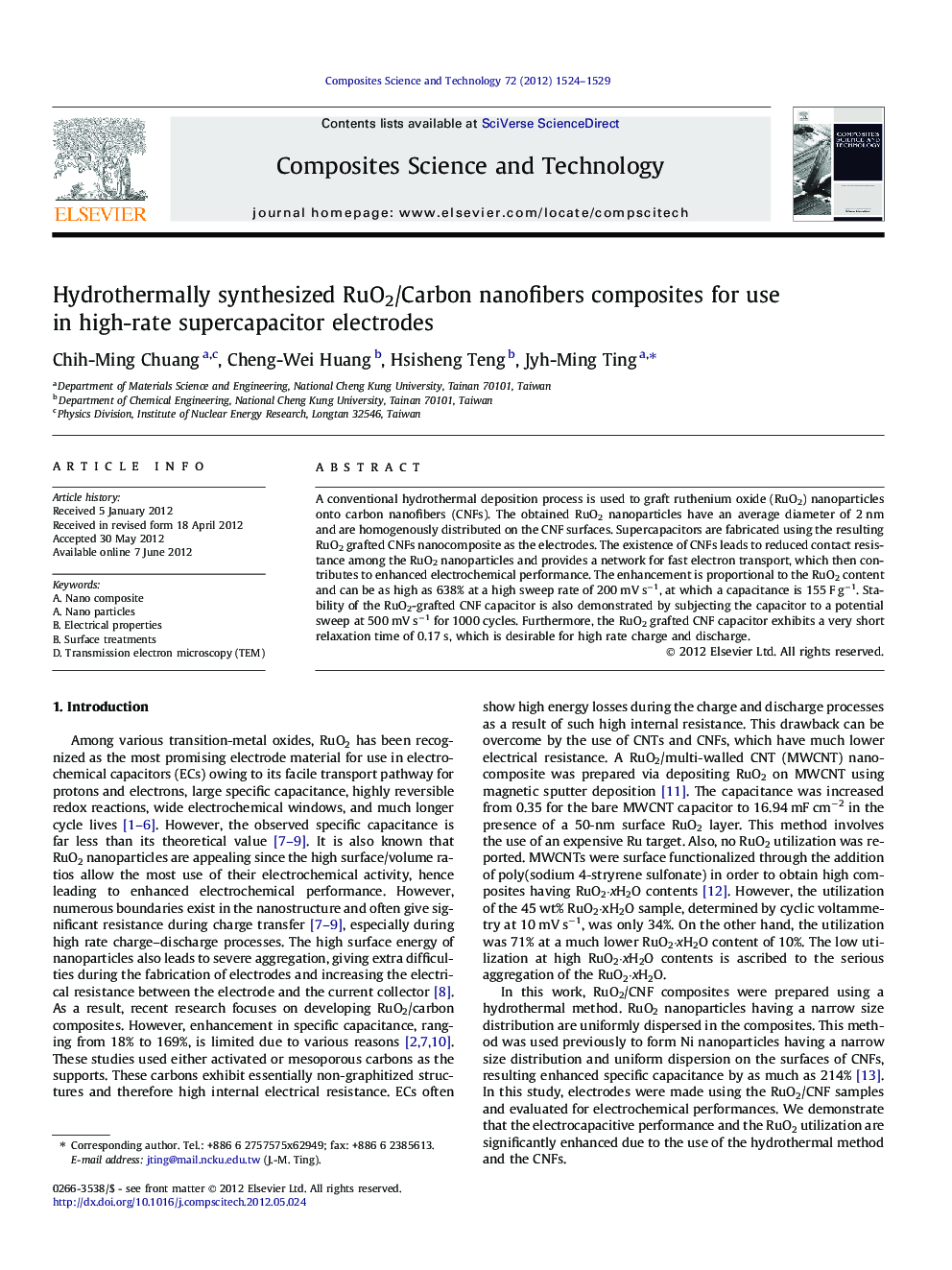| Article ID | Journal | Published Year | Pages | File Type |
|---|---|---|---|---|
| 10425082 | Composites Science and Technology | 2012 | 6 Pages |
Abstract
A conventional hydrothermal deposition process is used to graft ruthenium oxide (RuO2) nanoparticles onto carbon nanofibers (CNFs). The obtained RuO2 nanoparticles have an average diameter of 2Â nm and are homogenously distributed on the CNF surfaces. Supercapacitors are fabricated using the resulting RuO2 grafted CNFs nanocomposite as the electrodes. The existence of CNFs leads to reduced contact resistance among the RuO2 nanoparticles and provides a network for fast electron transport, which then contributes to enhanced electrochemical performance. The enhancement is proportional to the RuO2 content and can be as high as 638% at a high sweep rate of 200Â mVÂ sâ1, at which a capacitance is 155Â FÂ gâ1. Stability of the RuO2-grafted CNF capacitor is also demonstrated by subjecting the capacitor to a potential sweep at 500Â mVÂ sâ1 for 1000 cycles. Furthermore, the RuO2 grafted CNF capacitor exhibits a very short relaxation time of 0.17Â s, which is desirable for high rate charge and discharge.
Keywords
Related Topics
Physical Sciences and Engineering
Engineering
Engineering (General)
Authors
Chih-Ming Chuang, Cheng-Wei Huang, Hsisheng Teng, Jyh-Ming Ting,
